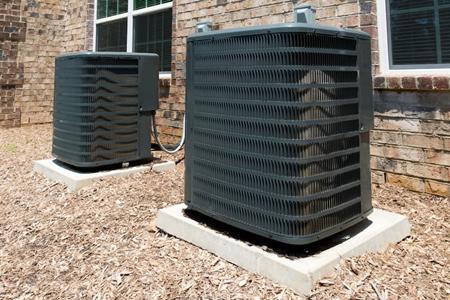What Is the New A2L Refrigerant & How It Affects Your HVAC System

Introduction
As environmental regulations tighten and the HVAC industry evolves, new refrigerants are emerging to replace older, high-GWP (Global Warming Potential) refrigerants like R-22 and R-410A. One of the most significant advancements in this area is the introduction of A2L refrigerants. These low-GWP refrigerants are designed to be more environmentally friendly while maintaining effective cooling capabilities. In this comprehensive guide, we will explore what A2L refrigerants are, how they work, their benefits, potential drawbacks, and how they impact HVAC systems. Unified AirTech is here to provide you with everything you need to know about this transition.
What Are A2L Refrigerants?
A2L refrigerants are classified as mildly flammable, low-GWP refrigerants that serve as alternatives to traditional refrigerants like R-410A. They are categorized as A2L due to their low toxicity (A) and low flammability (2L). These refrigerants are designed to reduce greenhouse gas emissions and comply with environmental regulations such as the Kigali Amendment and the U.S. EPA’s SNAP program.
- Examples include R-32, R-454B, and R-1234yf
Why Are A2L Refrigerants Being Introduced?
The push for A2L refrigerants is driven by environmental concerns and regulatory mandates to phase out refrigerants with high GWP. R-410A, for instance, has a GWP of over 2,000, while A2L refrigerants have significantly lower GWPs, ranging from 300 to 700. Transitioning to A2L refrigerants helps HVAC systems reduce their carbon footprint and align with global initiatives to combat climate change.
Benefits of A2L Refrigerants
- Lower GWP: Significantly reduces greenhouse gas emissions
- Improved Efficiency: Offers higher energy efficiency and lower operating costs
- Compatibility: Can be used in new HVAC equipment designed for A2L refrigerants
- Environmental Compliance: Helps meet current and future regulatory requirements
Potential Drawbacks of A2L Refrigerants
- Mild Flammability: Requires specific safety measures and handling protocols
- Equipment Modifications: Older systems may not be compatible
- Training Requirements: Specialized technician training is necessary
Impact on HVAC Systems
- System Design: May require component modifications for safe handling
- Refrigerant Handling: Needs special leak detection and safety practices
- Maintenance Considerations: May include additional safety systems like ventilation and sensors
How Unified AirTech Is Preparing for the Transition
At Unified AirTech, we are committed to staying ahead of industry changes and ensuring that our clients are prepared for the transition to A2L refrigerants. Our technicians are fully trained and certified to handle A2L refrigerants safely and effectively. We also offer comprehensive system assessments to determine whether your current HVAC equipment can be retrofitted or requires replacement to accommodate A2L refrigerants.
Conclusion
As the HVAC industry moves toward more sustainable and environmentally friendly refrigerants, A2L refrigerants represent a critical step forward. While they offer significant benefits in terms of reduced GWP and improved efficiency, they also present unique challenges related to flammability and system compatibility. Unified AirTech is here to help you navigate the transition, providing expert guidance, retrofitting services, and comprehensive maintenance plans to keep your HVAC system running efficiently and safely. Contact us today to learn more about how A2L refrigerants can impact your HVAC system and how we can assist you in making a seamless transition.
Contact Our HVAC Experts for Fast, Reliable Service In Yonkers & Surrounding Areas!
Or Fill Out Our Quick Form!